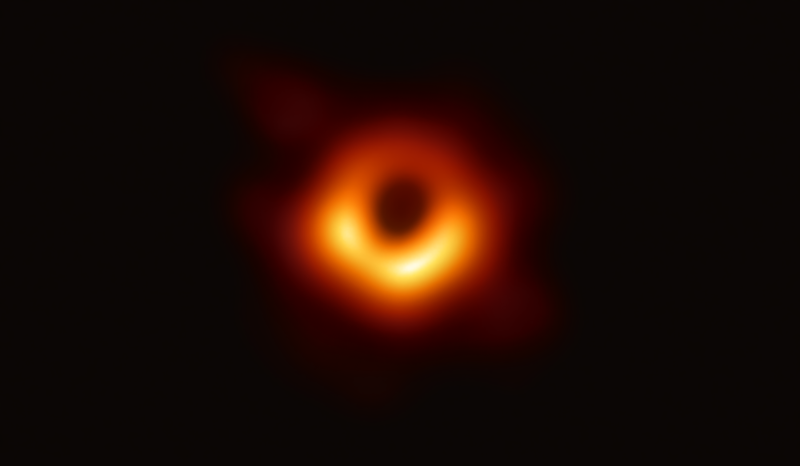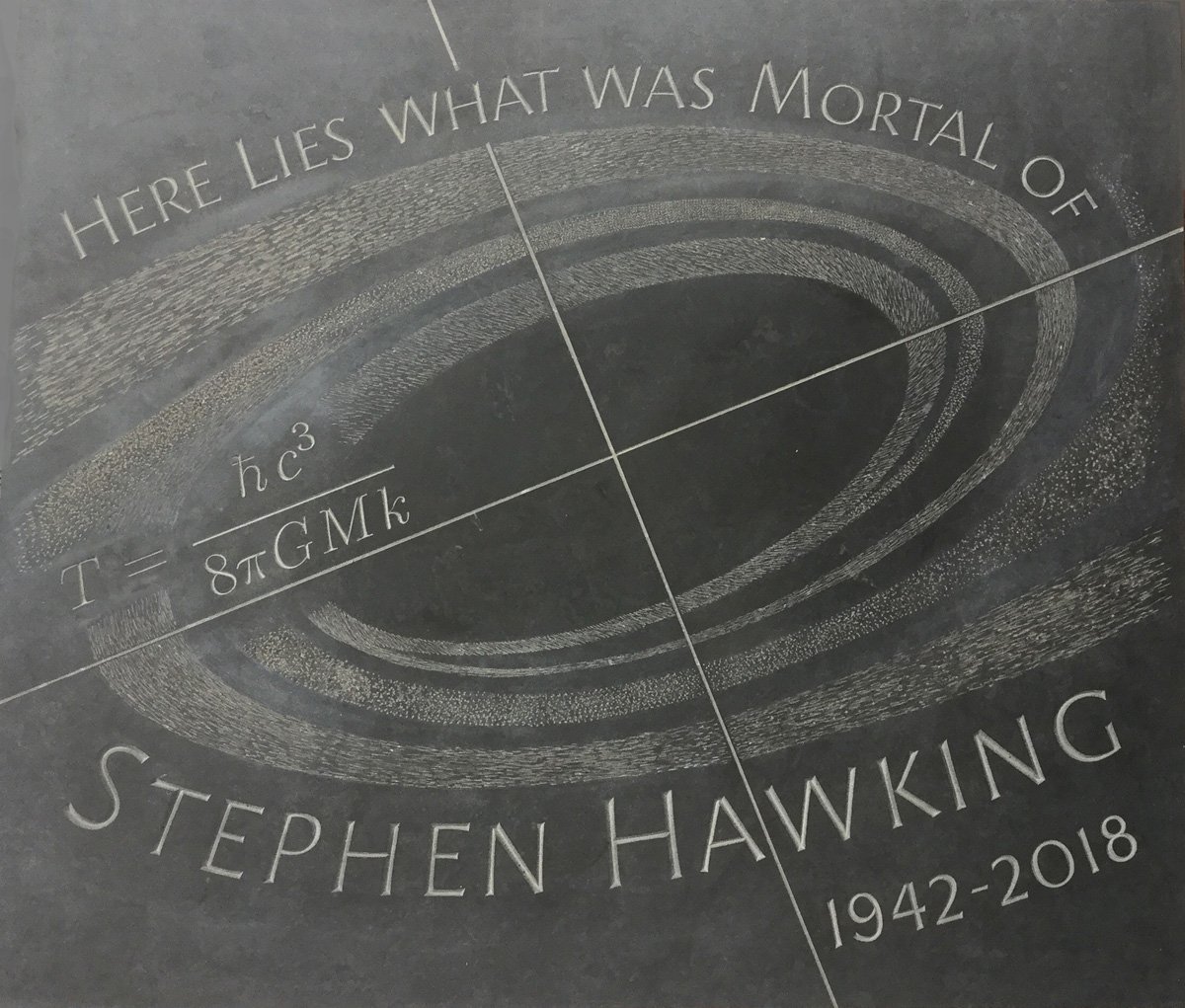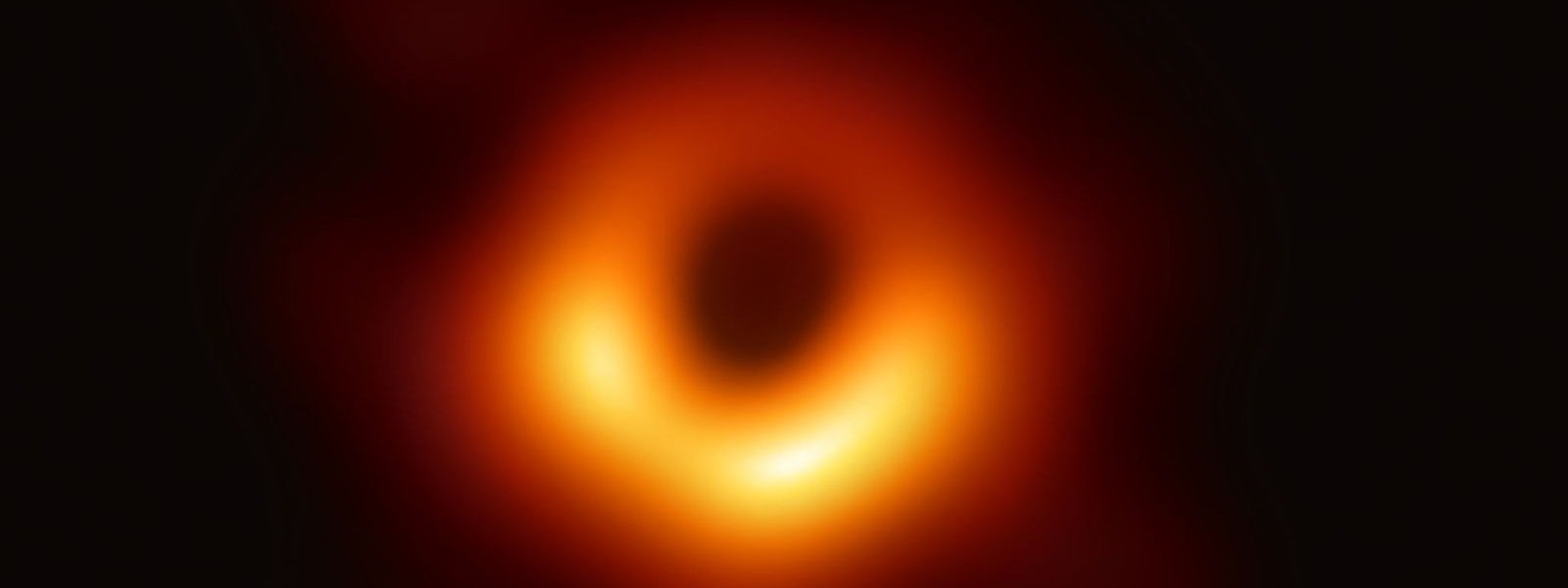
This remarkable glimpse of the heart of darkness of a black hole called M87 marks a major advance since I covered an attempt in 2008, when just three telescopes combined to gaze into the maw of the black hole that sits at the heart of our own galaxy, an enigmatic source of radio waves called Sagittarius A* (Sgr A*).
Today, in simultaneous global press conferences, Dr Sheperd Doeleman, Harvard University Senior Research Fellow, described how the Event Horizon Telescope, named after a black hole’s point of no return, combined signals from eight telescopes to create an Earth-sized virtual telescope capable of resolving a structure as small as an orange on the moon.
‘Black holes are the most mysterious objects in the universe,’ said Dr Doeleman, EHT Director, adding that in the case of M87, as a result of today’s ‘extraordinary scientific feat…we have seen the unseeable.’
The results are published in the Astrophysical Journal Letters.
M87 is at the centre of the Virgo galaxy, a behemoth with a mass 6.5 billion times that of the Sun, located 54 million light-years away from Earth, which also spews out a jet of energy thousands of light-years across space.
Dr Doeleman, Dr Jonathan Weintroub and colleagues used a technique called Very Long Baseline Interferometry to combine the data from eight observatories to study radio wavelengths that can penetrate the gas and dust that shroud the heart of galaxies.
They have also gathered data on Sgr A*, which is about the size of the orbit of Mercury, of mass about four million times that of our sun, and light from its surroundings takes 25,000 years to reach Earth.
However, because SgrA* is so much less massive (1500 times) than M87 ‘the timescale of variability for Sgr A* is about 20 minutes or variable over the time scale of an observation,’ said Dr Weintroub. ‘This makes the imaging more challenging because we depend on it staying static as the Earth rotates.
‘Which isn’t to say we’ve given up on SgrA*, very much to the contrary, but that’s why we focused on M87 first, which wasn’t easy either, but the better one on which to start.’
The existence of the Sgr A* black hole was predicted in 1971 by Lord Rees, Astronomer Royal, with Donald Lynden Bell. Today, the cores of largest galaxies are thought to harbour supermassive black holes and, though impressed by today’s M87 results, Lord Rees said he was disappointed not to see more details of the jet.
Nearby stars have been seen to orbit around black holes, an indirect clue to the existence of these gravitational monsters, while at the event horizon of the black hole space-time itself bends to the point where even light can’t escape.
The boggling gravity of a black hole gobbles up dust, gas and light from its surroundings into a disc around itself, eventually pulling this material over its event horizon and into oblivion.
The black holes are rendered visible as a shadow backlit by the accretion disk of material, where heat and light are generated, spiralling into the black hole.
The way a black hole wraps light around the event horizon in accordance with one of Einstein’s most famous predictions – the bending of starlight by a massive body in space – was first confirmed by Sir Arthur Eddington’s measurements during the 1919 solar eclipse, the results of which turned Einstein into a global superstar. In theory, space-time is warped so strongly that one can see behind the black hole.
At the most basic level, the 200 or more scientists of the Event Horizon Telescope want to answer two questions. The first is to take an image of a black hole, since ‘seeing is believing’. The second is whether Einstein’s predictions of the size and the shape of the black hole’s shadow hold up.
They might be circular, oval or some other shape, depending on circumstances which, if confirmed, is dull for theoreticians. However, if the Einsteinian equations describing them are askew, the research could open the door to new physics.
In the case of M87, the results were consistent but ‘this is just the beginning,’ said Dr Doeleman.
‘Once we were sure we had imaged the shadow, we could compare our observations to extensive computer models that include the physics of warped space, superheated matter and strong magnetic fields. Many of the features of the observed image match our theoretical understanding surprisingly well,’ remarked Paul T.P. Ho, EHT Board member and Director of the East Asian Observatory. ‘This makes us confident about the interpretation of our observations, including our estimation of the black hole’s mass.’
This ‘herculean task’ has resulted in a ‘historic moment,’ said National Science Foundation Director, France Córdova, explaining that it would ‘transform and enhance our understanding of black holes.’
One of the best simulations of what to expect can be found in the Hollywood movie Interstellar, which Kip Thorne, Feynman Professor of Theoretical Physics Emeritus at Caltech, worked with Paul Franklin of the British company Double Negative to show, as Thorne put it, ‘image distortion akin to a fun-house warped mirror.’
Thorne shared the Nobel Prize in 2017 for the observation of another prediction of Einstein’s general relativity, that gravitational waves – ripples in space-time – are generated by violent cosmic events, such as when two black holes collide. A prototype component of the Advanced LIGO (Laser Interferometer Gravitational Wave Observatory) gravitational wave detector made by the Rutherford Appleton Laboratory, Chilton, can be seen in the Science Museum.
Anticipated as ‘dark stars’ (stars so big that light cannot escape) in the 1700s by the English clergyman John Michell, black holes are among the more extraordinary predictions of Einstein’s theory of general relativity, one that links space, time and gravity, one of the greatest accomplishments of the human mind.
Originally, black holes were just one mathematical solution to Einstein’s field equations. But in the 1930s, the Nobel Prize winning astrophysicist Subrahmanyan Chandrasekhar showed that black holes were an inevitable consequence of a star’s death, and scientists started considering them real objects.
The late Stephen Hawking is another key figure in the story of black holes. He first caught the attention of his peers in the late 1960s, working with Roger Penrose on how general relativity sometimes breaks down, resulting in what is called a singularity. They showed that such singularities must occur inside black holes – and, most probably, at the start of the universe.
One of Hawking’s overarching goals was to take general relativity, which can be used to predict the large scale structure of the universe, and blend it with quantum theory, which rules the world of atoms and the very small, to produce a grand theory of everything, known as quantum gravity.
In his most famous work, Hawking raised the intriguing possibility that black holes are not as black as once thought. The reason is down to one strange consequence of quantum theory: empty space isn’t empty: pairs of particles are constantly popping into and out of existence. If they appear on the border of event horizon, they may find themselves on different sides, with one sucked in, and the other becoming ‘Hawking radiation’.
If the paradoxical glow of Hawking radiation had been detected from a black hole during his lifetime, Hawking could well have won the Nobel Prize. But, as Lord Rees remarked, this could not have been detected in the images released today because the effect is inversely related to mass and it ‘would only be seen from black holes smaller than an atom, which nobody really expects to exist.’
On his 70th birthday, the Science Museum gave Hawking a special present, a ‘black hole light’, and at his memorial service at Westminster Abbey on 15th June 2018, his gravestone was unveiled which bears the Hawking’s equation that expresses Hawking radiation.

